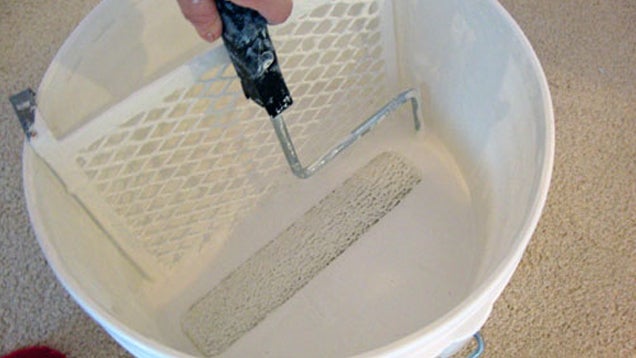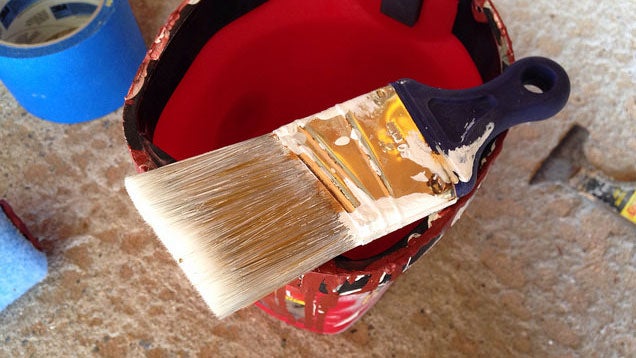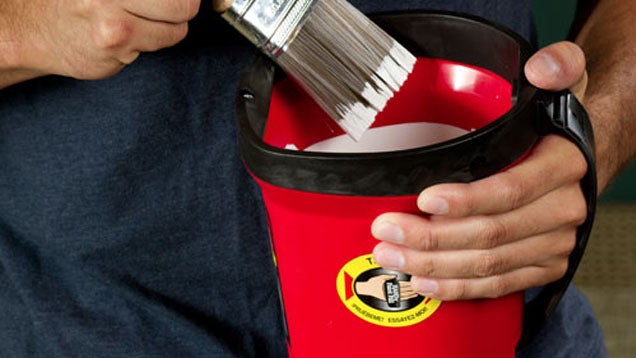Our friends at Lifehacker.com share "Five Tips to Make Painting Your Walls Easier"
From Lifehacker
Dipping a roller in some paint and slapping it on a wall seems like such a simple task—and to an extent, it is. But there are a few tips and tools that do make the job quicker, easier, and result in far less paint in your hair.
I'd painted dozens of rooms before I finally read an article on the proper way to roll on paint, and I'll be honest, I rolled my eyes at the idea of it. I typically bought cheap brushes, cheap paint, and didn't much care for painting rooms, but it didn't seem too difficult.
As it turns out, just because it seemed like a simple task, there were plenty of things that made the job easier that I wish I would have known several houses ago. Here are a few of them.
Learn to Roll Paint Properly
There's an actual technique to this, and I found that when I had a system down like this, I got more consistent coverage (which meant fewer coats and touch-ups,) I also realized I hadn't been loading my roller with enough paint in the past, which meant I was pushing the roller hard into the wall to get enough paint on it. Not only does that get tiring, it can leave streaks where paint gets pushed out of the ends of the roller. Once I had a system down, like the one described in this video, things got a lot easier, and the wall looked much better in the end.
Use a Bucket Instead of a Tray
This doesn't mean you need to buy five gallons of paint. Instead of pouring from a gallon into a tray, you can dump the whole gallon into a five-gallon bucket with a paint screen. It's far easier and less messy to load paint this way. I still use a tray if I'm doing a small space—like a hallway or bathroom—but if I know I'm going to use a gallon or more of paint, a bucket is the way to go.
Add an Extension Rod to Your Roller
My favorite extension rod is actually the 24-ish inches that snapped off a wooden broom handle at some point—proof that just a little bit of extra reach is helpful. Of course, if you want something fancier you can get actual extension rods at any hardware or big-box store.
Buy Good Brushes
Good paint brushes feel ridiculously expensive so for a long time I wouldn't spend the money. Then, I bought one of these rubber gripped edging brushes, and the difference was amazing. I thought it was just hype, but these are super comfortable to use (I tried a short-handled wooden version too and it wasn't nearly as comfortable in my hand) and they give you a great line. I'm not always responsible with my painting equipment, but I always make sure to clean and wrap the bristles on these to keep them in good shape.
Note: These brushes work so well that I stopped taping off rooms years ago, and just rely on the brush and a steady hand for cutting in all of the walls and trim. It actually works beautifully and saves me a ton of time, mess, and materials taping everything off.
Use a Lined Pail for Cutting In
"Cutting in" is when you use a brush to paint all of the edges and corners of a room. It often requires being on a ladder or step-stool for the edge around the ceiling, and you have to reload your brush with paint quite often. While I try to avoid any tools that feel "gimmicky" I've found the HANDy Paint Pail or similar lined paint pails to be quite useful.
They use liners which, yes, are more expensive, but it's one less thing to clean so I find the expense is worth it for me. It also has a handle which, for my small hands, is way easier and more comfortable than trying to grip a quart of paint in one hand while climbing up and down a ladder. That scenario has ended in disaster for me more than once.
What to Avoid
This is purely my personal opinion, but I feel like you get the best results spending money on high-quality basic tools like paint, brushes, and rollers. There are a lot of gimmicks out there that profess to make the job easier or fool-proof, like edgers, automatically loading paint rollers, things like the Point N Paint and any number of other "as seen on TV" tools. (Can we just universally agree that any tool that substitute "N" for "in" in it's name can't be trusted?)
This is just a DIYers perspective on tips and tools that have worked surprisingly well for me in the past, but there are a lot of ways you can paint a wall. If you have your own tips, I'd love to hear them.
For more tips and tricks for all your home needs visit:
NewEarthVA.com
Or follow us on
Instagram
NewEarthVA.com
Or follow us on




No comments:
Post a Comment